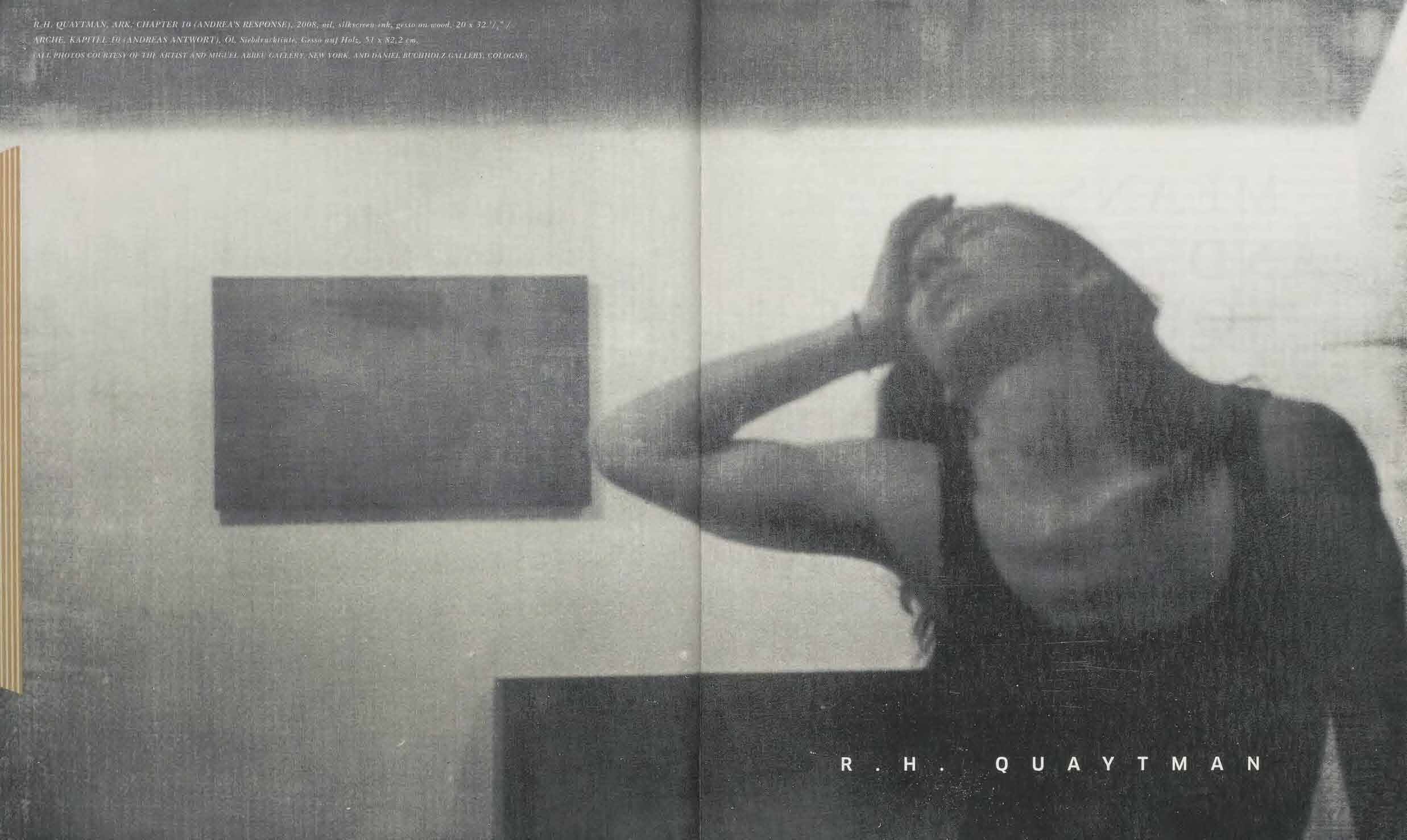Browse Selected Texts and more on the Collaboration Artists
Artist Insert
Editorial
The artists in this issue of Parkett—El Anatsui, Nathalie Djurberg, Rashid Johnson, R. H. Quaytman—each chart a path to their own specific worlds and each in their own way. Nathalie Djurberg’s universe “leads us into a netherworld, inferior and infernal, a world where both the characters and the viewers are turned into animals” (Massimiliano Gioni). So playful in appearance and yet precariously balanced on yawning abysses, hers is an archaic universe of loops, of compulsive repetition, of ambiguous dramaturgical objectives. A vital element in her art is the music of Hans Berg and it is with great pleasure that we announce a first for Parkett: the ninetieth issue comes with a CD.
The universe that Rashid Johnson creates in his art includes “The New Escapist Social and Athletic Club,” a group of photographs in which he plays several roles himself. The “sheer density of information,” “the explosive cosmoses … like energy packed in a hydrogen bomb” evoke aspects of a familiar and often brutal world (Tom Morton). Johnson works with an impressive array of materials: books, records, Shea butter, plants, Persian rugs, reflecting shelves, gold spray paint, and stones. With the latter he launches into the fantastic universe of science fiction.
There is an interesting connection between Johnson’s charred wooden panels and El Anatsui’s early wooden elements, which are similarly treated with fire. Whatever material he chooses to process, Anatsui reacts to it “as if he has encountered it for the first time in the flux of history” (Okwui Enwezor). He initially caught the public eye with vast tapestries, woven out of flattened, metal bottle caps. Robert Storr describes their undulating, effervescent presence in space: “Indeed the scintillating polychrome matrix of Anatsui’s hangings is a maximalist rejoinder to the minimalist model”.
Although well-versed in specialist discourse, R. H. Quaytman creates work beyond its bounds. Dividing her oeuvre into chapters, she has devised an archival system of pictorial groups, genres, and categories, which do not, however, bear up in the purity of isolation. Despite drawing inspiration from complex processes of detachment, her archive nonetheless foregrounds “the psycho-emotive sedimentation of the subject” (Jaleh Mansoor) and represents an “experiment with and upon … authorities” (Rhea Anastas).
The committed interest in forms of freedom that marks the art in this issue of Parkett is also manifest in the work of Danh Vo, with his astonishing appropriation of New York’s Statue of Liberty, and, of course, in Robert Crumb’s characteristic crossmating of art and counterculture. This Insert has been designed by Boris Mikhailov.
Table of Content
Holding the Release by Malerie Marder & Mark Grotjahn
Blackout in White: The Texture of Transmission – On the
Paintings of Corinne Wasmuth by Christina Végh
El Anatsui
A Ceaseless Search for Form by Okwui Enwezo
Ambition by Robert Storr
El Anatsui’s Metamorphic Sculptures by Chika Okeke-Agulu
Nathalie Djurberg / Hans Berg
Hic Sunt Leones, Notes on the Margins of Nathalie Djurberg’s Empire by Massimiliano Gioni
Wild Things by Ali Subotnick
Both Sides Now by Martin Herbert
Gas, Solid, Liquid, CD by Hans Berg
Rashid Johnson
Infinite Blackness by Tom Morton
I’m Not Sure by Matthew Day Jackson & Rashid Johnson
Fly by Franklin Sirmans
R. H. Quaytman
Means and Equivalence by Daniel Heller-Roazen
Painting – Folding by Jaleh Mansoor
A Nude Poses in the Whitney Musem Holding a Cigarette by Rhea Anastas
Boris Mikhailov, Insert
Shattered Freedom by Mirjam Varadinis
The Normal One, Les Infos du Paradis by Vincent Katz
Hanuman, Cumulus from India by Matthew Erickson






